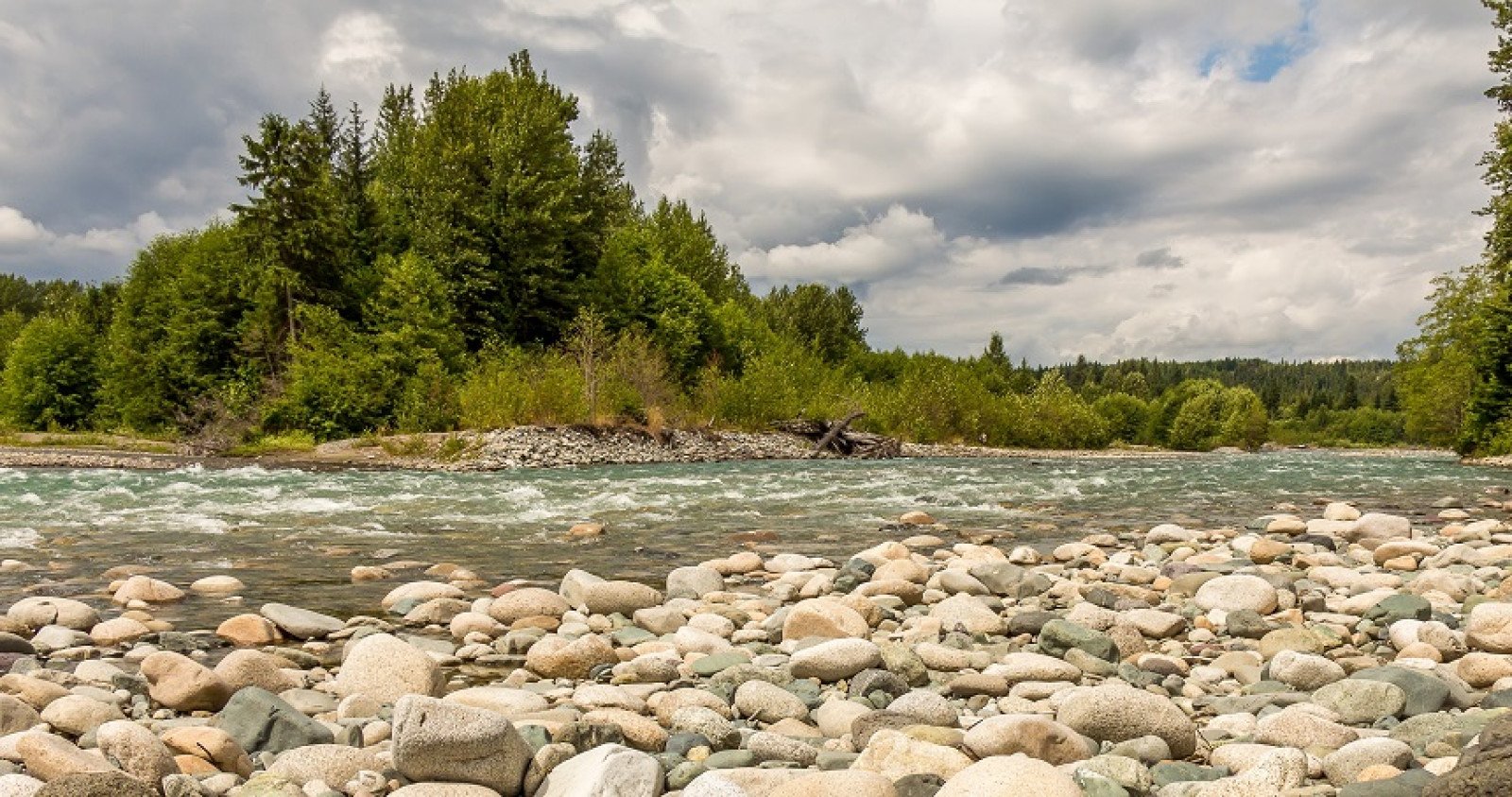Energy
Geologic resources and energy
Learn how geologic features and climate influence the location of various energy forms.

Overview
After making initial decisions about the best location for an electricity generation site, students explore how geographic and climatic factors can influence the location of various energy forms.
Instructions
What you'll need
- "Map of B.C." handout, one for each group
- "Rating the Locations" worksheet, one for each student
- Organize your students into small groups (2-4 students) and provide each group with a copy of the "Map of B.C." handout.
- Ask groups to suggest what place names might be related to each of the locations marked on the map. Groups might suggest the following places:
- Location A: near Osoyoos
- Location B: near Vancouver
- Location C: near Fort St. John
- Location D: near Kitimat
- Invite groups to decide which location might be the best for the future development of a natural gas electricity generation site. Encourage groups to use what they know about each location to help make the decision.
- Encourage groups to share their decisions and thinking with the class. As they share, use their thinking to highlight that geographic and climatic factors influence decisions about where various energy forms might be developed. Briefly explain the two factors that influence such decisions:
- Geologic factors: includes geologic features (e.g., mountains, rivers, tectonic plates) and resources. Geologic resources include energy resources (fossil fuels, geothermal resources), metals (e.g., iron, copper), and non-metallic resources (e.g., stone, water).
- Climatic factors: includes temperature, precipitation, hours of sunlight, and other climate and weather conditions and patterns
- Briefly explain to students that the challenge of this activity is to select optimal locations for various energy forms, then decide which factor—geologic or climatic—is more significant in determining the optimal location for each energy form.
- Provide every student with a copy of the "Rating the locations" worksheet, and assign each group one renewable energy form (i.e., hydroelectric, solar, wind, geothermal). Ask groups to use online and classroom resources such as maps of B.C.’s topography, climate, and weather patterns to help identify two advantages and disadvantages of the geographic and climatic factors of each location related to their assigned energy form.
- After groups have identified the advantages and disadvantages, draw their attention to the rating scale found at the bottom of page 2 of the worksheet. Briefly explain that their task is to now use the advantages and disadvantages to rate the suitability of each location for their assigned energy form.
- Prompt students to note their ratings in the right-hand column of page 1 of the worksheet, then use their ratings to make an overall decision about which location would be optimal for the assigned energy form.
- Invite groups to share their decisions and thinking with the class.
- Ask groups to now decide which factor—geologic or climatic—was the most significant in determining the optimal location for their assigned energy form. Prompt groups to note their decisions and evidence on their worksheets.
- Conclude the activity by inviting groups to share their decisions and thinking with the class. Discuss what the ratings reveal about the importance of geologic resources and climate within B.C.
Modify or extend this activity
- Invite students to assess established or proposed sites for hydro, solar, wind, or geothermal generating projects.
- Assign groups one of the sites and one of the energy forms.
- Rather than using the four locations on the map handout, ask groups to identify an alternative optimal location for an assigned energy form.
Curriculum Fit
Earth Sciences 11
Big idea
- Earth materials are changed as they cycle through the geosphere and are used as resources, with economic and environmental implications.
Content
- Economic and environmental implications of geologic resources within B.C. and globally
- The hydrologic cycle
- Weather as the interaction of water, air, and energy transfer
- Solar radiation interactions and impacts on the energy budget
- Water as a unique resource
Curriculum competencies
Questioning and predicting
- Demonstrate a sustained intellectual curiosity about a scientific topic or problem of personal, local, or global interest
- Make observations aimed at identifying their own questions, including increasingly abstract ones, about the natural world
Processing and analyzing data and information
- Seek and analyze patterns, trends, and connections in data, including describing relationships between variables, performing calculations, and identifying inconsistencies
- Use knowledge of scientific concepts to draw conclusions that are consistent with evidence
Evaluating
- Consider social, ethical, and environmental implications of the findings from their own and others’ investigations
Applying and innovating
- Contribute to finding solutions to problems at a local and/or global level through inquiry
- Implement multiple strategies to solve problems in real-life, applied, and conceptual situations
Communicating
- Communicate scientific ideas and information, and perhaps a suggested course of action, for a specific purpose and audience, constructing evidence-based arguments and using appropriate scientific language, conventions, and representations
- Express and reflect on a variety of experiences, perspectives, and worldviews through place
Assessments
Assess your students’ abilities to:
- Use knowledge of scientific concepts to draw conclusions that are consistent with evidence
- Use appropriate scientific language, conventions, and representations
Teaching Notes
This activity is meant to be supplemented by online and classroom resources such as maps of B.C.’s topography, climate, and weather patterns.







